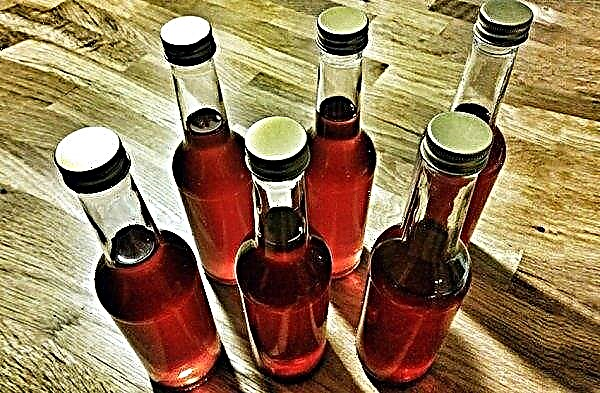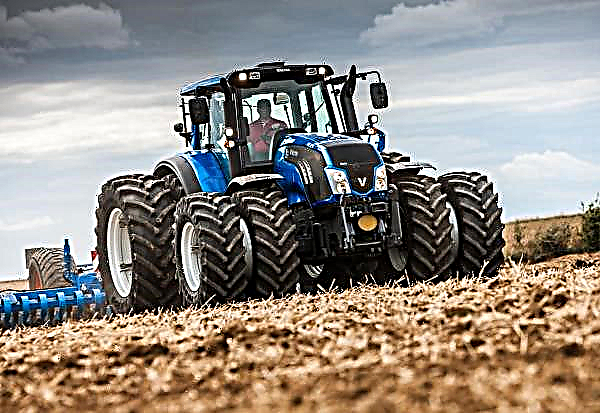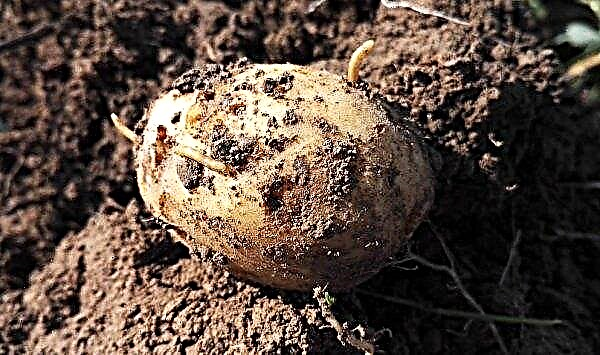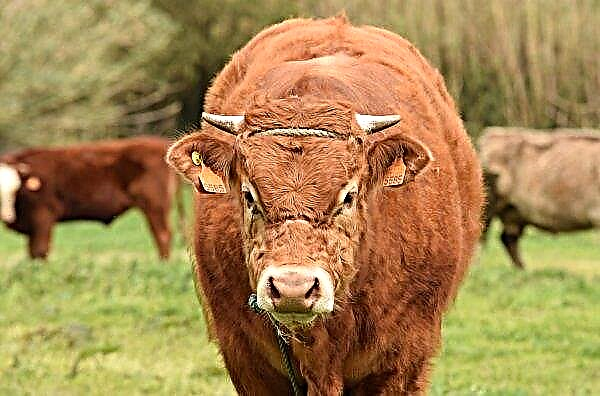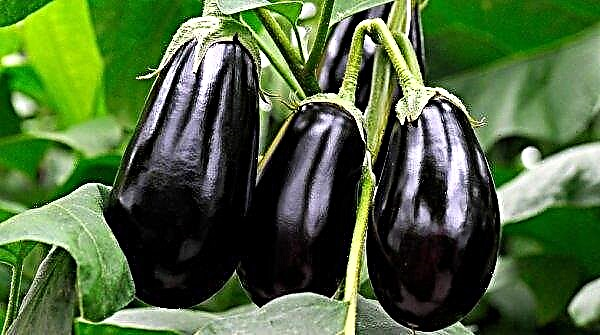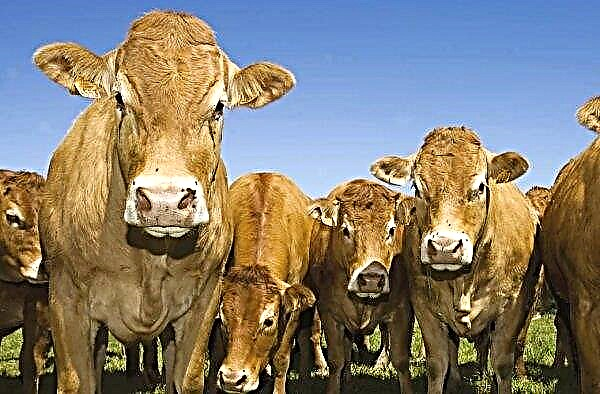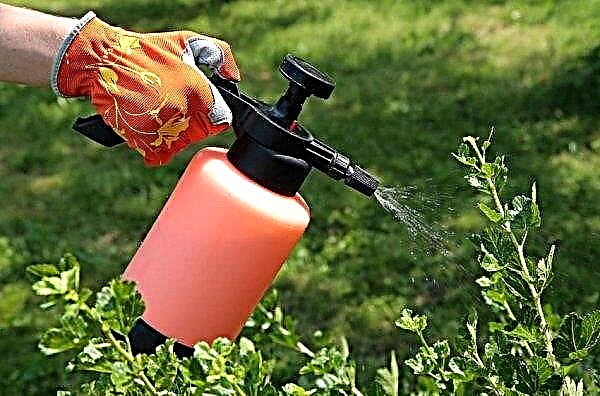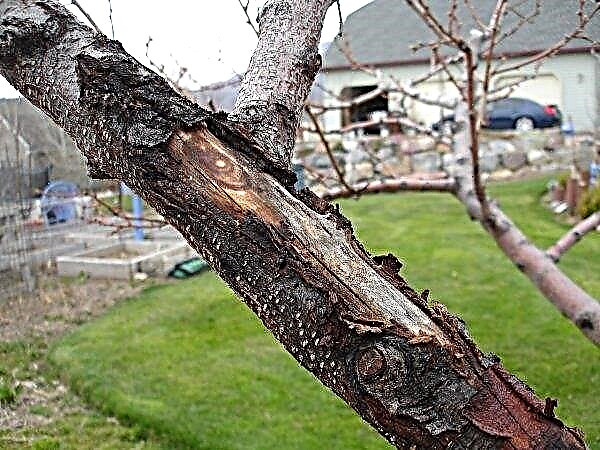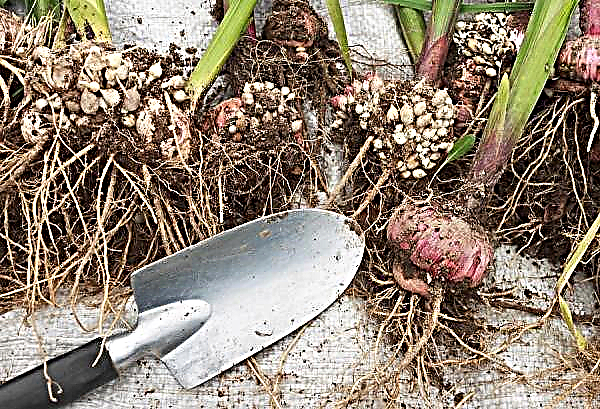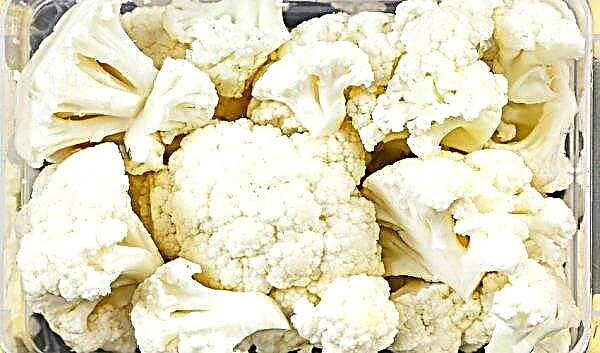All gardeners, even those who live in regions with a frosty climate, want to eat apples grown in their own orchard, but very often the trees cannot survive the harsh winter and die. This is why grades with high frost resistance should be preferred. These include the variety of apple trees Antey from Belarus. Let's find out more about it.
History of Variety Breeding
The author of the variety is Grigory Kondratievich Kovalenko from the Belarusian Research Institute of Potato and Horticulture, which crossed the Belarusian Raspberry variety with a hybrid from crossing varieties Babushkino and Newton. In 1996, this apple tree was added to the State Register of Varieties of the Republic of Belarus. The variety can be grown in regions with a cold climate due to its frost resistance.
Did you know? Trying every day a new variety of apples, you will learn the taste of all known varieties in more than 20 years.
Description and characteristics of the variety Antei
Consider the main indicators that characterize this apple tree.
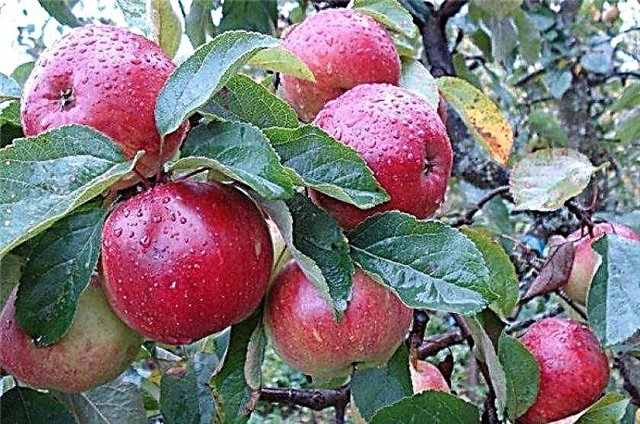 Fruits apple tree Antei abundantly and regularly
Fruits apple tree Antei abundantly and regularly
The appearance of the apple tree
Variety Antei can be described as follows:
- A tree of medium height - 2.5–3 m.
- The crown is not very thickened, in the form of a cone, with a diameter of about 3 m.
- There are few branches, they are divided into tiers, their thickness is average. The bark on the branches is dark brown when they are young, and light brown in adulthood.
- The leaves are large, in shape resembling an elongated oval with a sharp tip and a serrated edge, the color is dark green, grow on long petioles.
- Flowering occurs in May.
- The fruits are large, about 200 g each, the maximum weight is 250 g. They are painted green with a dark red blush covering most of the surface. The shape is bluntly conical with barely visible ribs, slightly flattened above and below, the skin is dense, covered with a wax coating, and in the funnel it is rusty.
- The pulp has a green tint, dense, coarse-grained, with abundant secretion of juice, a light aroma and a sweet and sour taste.
- Seeds are dark brown, in the form of faceted wedges, a bulbous core.
- Trees can withstand frost below -30 ° C.
- The apple tree Antei lives for about 35 years, of which it actively bears fruit from the 5th to the 25th year.
 The fruits of this variety of apple trees are notable for the possibility of universal use in processing
The fruits of this variety of apple trees are notable for the possibility of universal use in processing
Pollinators and productivity
The Antey variety is self-fertile, therefore, it is necessary to plant pollinating trees nearby: varieties Welsey, Anis, Autumn striped, Pepin saffron, Golden summer, Daughter Papiroki, Yandykovsky, Dachny.
Important! For pollination, it is better to plant summer or autumn varieties, since winter are poorly pollinated by Antei.
The yield of Antei reaches 50 kg from 1 tree or 40 tons from 1 ha. Fruiting is annual.
Video: Antey variety apple tree
Advantages and disadvantages of the variety
- The advantages of the Antei variety include:
- resistance to frost;
- the ability of apples to be stored for a long time;
- fruiting regularity;
- high productivity;
- large fruits;
- simplicity in leaving;
- it is possible to transport the crop without loss;
- low cost of cultivation, which allows you to grow a variety for commercial purposes.
- The disadvantages of the variety include:
- susceptibility to scab disease;
- self-infertility.
Features of cultivation and care
We will get acquainted with the order of planting and subsequent care of the variety Antei.
Video: Apple tree planting instructions
Choosing a place and planting material
The place for planting this apple tree is chosen sunny, making sure that the soil is fertile, light in composition and neutral in acidity. Groundwater should not lie close to the surface.
Planting trees is preferable in the fall, after the leaves have fallen, and before the start of frost, so that the trees have time to take root. Spring planting should end before the buds appear.
Seedlings need to be bought only at specialized points of sale from sellers with a good reputation. Before buying the trees, the sick, wrinkled, blackened, with growths specimens are inspected and discarded.
After purchase, planting material is kept so that the roots do not dry out. Before disembarking, they must be immersed in water for 2-3 hourshaving previously examined for the absence of broken and damaged parts.
 Before planting, the seedling should be placed in a container of water for several hours so that the root system is saturated with moisture.
Before planting, the seedling should be placed in a container of water for several hours so that the root system is saturated with moisture.
Landing pattern
The sequence of actions during landing is as follows:
- Dig a hole with a diameter of about 1 m and a depth of 0.8 m.
- Pour a drainage layer (expanded clay) to the bottom.
- Mix the dug up soil with fertilizers, pour a part into the pit.
- Set the tree, spreading the roots.
- Cover the remaining soil with a knoll, making sure that the root neck of the seedling rises 3–5 cm above the ground.
- Tamp the ground lightly.
- In a circle, equip a shallow ditch.
- Install the support and attach a seedling to it.
- Pour a tree of 20 liters of water.
- If after some time the earth settles, add more soil.
- Water the seedling once a week.
 Fig. 1 - the process of planting a seedling, Fig. 2 - a correctly planted seedling
Fig. 1 - the process of planting a seedling, Fig. 2 - a correctly planted seedling
Watering and feeding
It is necessary to water an adult tree of the Antey variety three times a season:
- in early spring;
- in the summer, if it has not rained for a long time;
- in the fall, when the crop will be harvested.
1 tree will require about 80 liters of water.
The fertilizer application looks like this:Important! It is recommended to sprinkle the soil with mulch (straw, sawdust) to protect the roots from moisture loss.
- in spring, after flowering;
- at the time of fruit formation;
- in the fall, after harvesting.
In autumn, the trees are fed with organic fertilizers or mineral (phosphorus-potash), but nitrogen is fed only in the early spring.
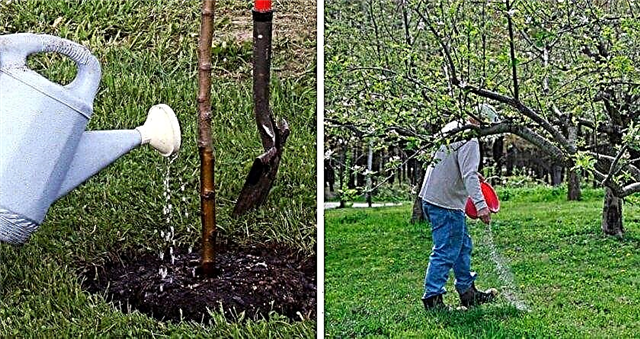 Fertilizing in a timely manner is an important step in tree care
Fertilizing in a timely manner is an important step in tree care
Cropping and shaping the crown
The formation of the crown is necessary not only for the beauty of the tree, but also to increase the yield and taste of apples, since the crown becomes less thickened and better passes the sun. The branches become more powerful and better withstand the crop, and the height of the tree makes it easy to take ripened apples.
Variety Antei is characterized by the fact that its branches grow in tiers, so it is not difficult to form a crown:- A seedling that was planted in the fall leaves 50 cm of the stem in the spring and 30 cm in the 3 lower branches.
- After a year, leave 1 branch at a height of 50 cm and 2 after 15 cm, which grow in the opposite direction. The ends of the branches are shortened.
- A year later, in the next tier, 2-3 branches are left 50 cm from last year, the ends are shortened.
- After another year, leave 1 branch after 50 cm, the ends of all tiers are shortened equally. A little cut central branches.
 Apple tree calmly tolerates cropping events
Apple tree calmly tolerates cropping events
The crown is formed according to the following rules:
- The branches of the 1st tier should be directed in different directions. The greater the distance between them, the better.
- The branches that grow higher should be shorter than the branches that grow lower.
- You can not remove more than 1/3 of the growing branches.
- The branches of the 1st tier are cut to the same length.
- The distance between the branches of the 1st tier is observed at the level of 15 cm.
Pruning is necessary so that old, sick, broken branches do not interfere with the tree growing. It can be carried out in early spring or after harvesting. In addition, it is necessary to trim the central shoot if the tree begins to actively stretch up.
Did you know? US President George Washington relieved stress by pruning apple trees in his own garden.
Preparing trees for winter
After the leaves fall, sanitary pruning is carried out, all plant residues are removed, fertilizers are introduced into the trunk circle, combining with watering. Then the soil is loosened and sprinkled with mulch. For the winter, it is recommended to wrap the trunk of the apple tree with non-woven material (but not polyethylene) to protect it from rodents.
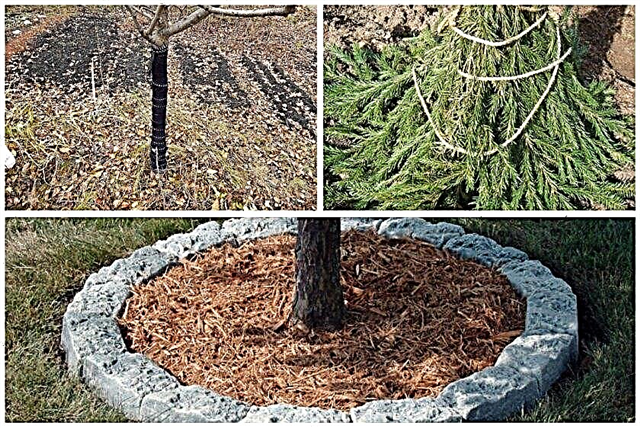
Pest and Disease Control
Grade Antei threatens scab, especially if the summer was rainy. This fungal disease causes damage to leaves and fruits, and fungicides (Fitosporin, Gamair, Strobi, etc.) can help combat it.
Malicious insects (aphids, sawflies, moths, leafworms, flower beetles, weevils, hawthorn, silkworms) are destroyed with the help of traps, trapping belts, insecticides (Bordeaux fluid, Decis, Fitoverm, Confidor, etc.). A prerequisite is preventive treatment of trees from pests and diseasesto be carried out in the spring.
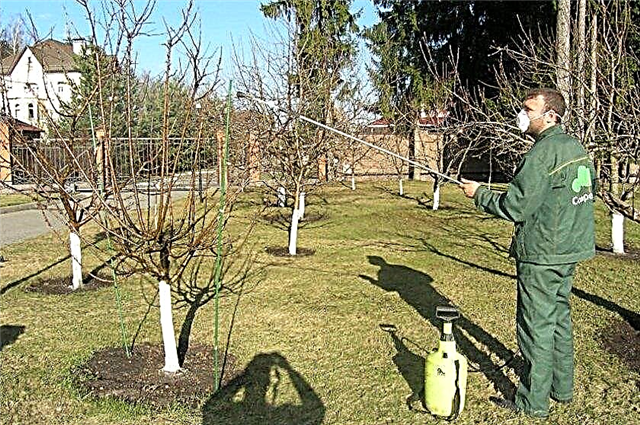
Harvesting and storage
Harvest apples of this variety begin to collect after the 3rd year of life of the apple tree. Apple picking begins in September or October, depending on the weather. Harvested fruits must be placed for 2 months in a cold room so that they finally ripen. Antei apples can be stored until May. The crop is suitable for fresh consumption and cooking.
The variety of apple trees Antey will delight gardeners with large and tasty fruits that can be stored for a long time without losing their taste.
